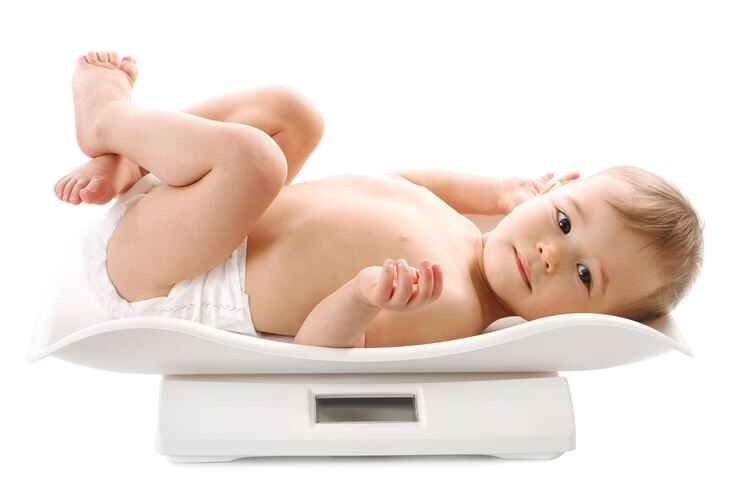Average Baby Weight: A Comprehensive Guide with Charts and Development

From the moment a newborn comes into the world, their growth becomes a topic of much interest and discussion for many parents. It’s almost a universal concern: “Is my baby growing properly?” Understanding the average baby weight, how it adjusts over time, and what factors might influence a baby’s growth can provide comforting insights.
In this detailed exploration, we’ll dive into the world of average baby weight, supported by growth charts and a discussion of developmental milestones. Whether you are a new parent or someone involved in childcare, this information will help you track and understand the physical development of a young child.
What Is ‘Average Baby Weight’?
Before diving into charts and numbers, it’s crucial to understand what ‘average baby weight’ means. The term refers to a weight range considered typical for babies at specific ages. Pediatricians use these benchmarks to assess how well a child is growing compared to their peers.
Newborn Weight: What’s Normal?
Babies can vary widely in weight at birth, but most full-term babies (born between 37 and 41 weeks) weigh anywhere from 5 pounds, 8 ounces (2.5 kilograms) to 8 pounds, 13 ounces (4 kilograms). Any baby weighing under 5 pounds, 8 ounces is considered low birth weight, while babies over 8 pounds, 13 ounces are often considered larger than average.
Key Factors That Influence Baby Weight
Several factors can influence the weight of a baby at birth and as they grow. These include:
-
Genetics: Just as adults are different heights and sizes, babies are genetically predisposed to be a certain weight.
-
The Mother’s Health During Pregnancy: A mother’s diet, health, and behavior during pregnancy can all significantly impact birth weight.
-
Nutrition: After birth, a baby’s feeding pattern largely dictates their weight gain.
-
Prematurity: Babies born prematurely often weigh less than full-term babies simply because they’ve had less time to grow in the womb.
Growth Charts and Their Importance
Growth charts are essential tools used by pediatricians to ensure a child is growing adequately. They show the average weight for children at various ages and help to highlight any potential health concerns if a child is significantly below or above these averages.
Understanding the Percentile Charts
When you look at a growth chart, you’ll see percentiles. These help indicate how your baby’s weight compares to other babies of the same age and sex. For instance, if your baby is in the 50th percentile for weight, that means they weigh more than 50% of their peers and less than the other 50%.
Tracking Baby Weight: Month by Month Guide
To give you a clearer picture of what to expect in terms of weight, here’s a basic month-by-month guide for an average baby:
-
Month 1: Most newborns gain weight at a rate of about an ounce (30 grams) a day.
-
Month 2: Expect your baby to weigh about 10 pounds (4.5 kilograms) by this point.
-
Month 3 to 6: Babies typically double their birth weight by around 5 months.
-
Month 6 to 12: Weight gain tends to slow down after about 6 months, tripling their birth weight by their first birthday.
Each baby is unique, and some may gain weight faster or slower than others, which is often perfectly normal.
Signs and Symptoms to Watch For
Although variations in baby weight are normal, significant deviations can indicate a health issue. Here are a few signs that could suggest a problem with a baby’s weight gain:
-
Poor Feeding Habits: Difficulty nursing or bottle-feeding can directly affect a baby’s weight.
-
Frequent Illness: Frequent bouts of illness can lead to poor nutritional intake and weight loss.
-
Lethargy: A baby who seems unusually sluggish or inactive might not be eating enough.
When to Consult a Pediatrician
It’s always best to consult with a healthcare provider if you have concerns about your baby’s weight. Whether it’s slower weight gain or excessive weight gain, a pediatrician can provide guidance tailored to your baby’s health needs.
Conclusion: Emphasizing Holistic Development
While tracking baby weight is important, it’s equally crucial to consider a baby’s holistic development, including milestones like smiling, rolling over, and starting to speak. A healthy baby develops physically, emotionally, and cognitively at a pace that’s right for them. As a parent, watching and supporting this journey is both a responsibility and a delight.
Remember: Every baby develops at their own pace, and the numbers on the scale are just one part of the big picture of your child’s wellbeing.
By understanding and utilizing the insights on average baby weight we’ve discussed, you can better navigate the joys and challenges of early parenthood. Keeping informed and in touch with your pediatrician are key steps in ensuring your baby’s health and happiness.